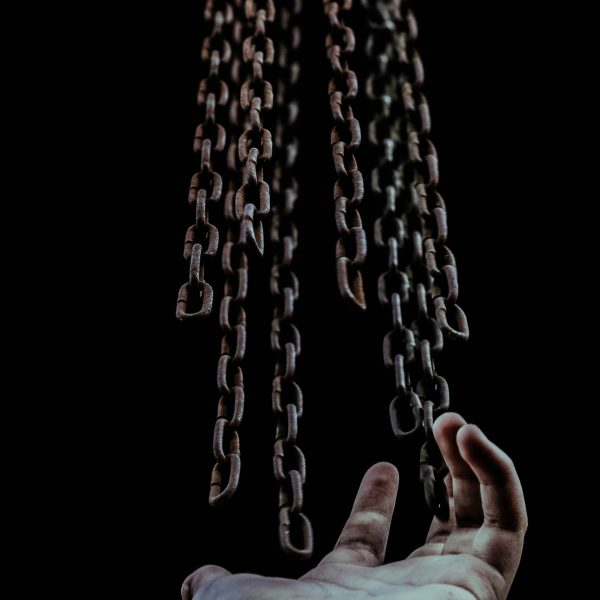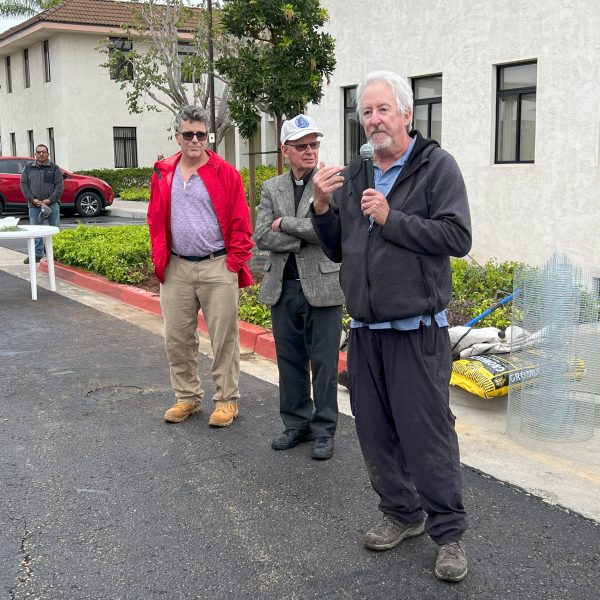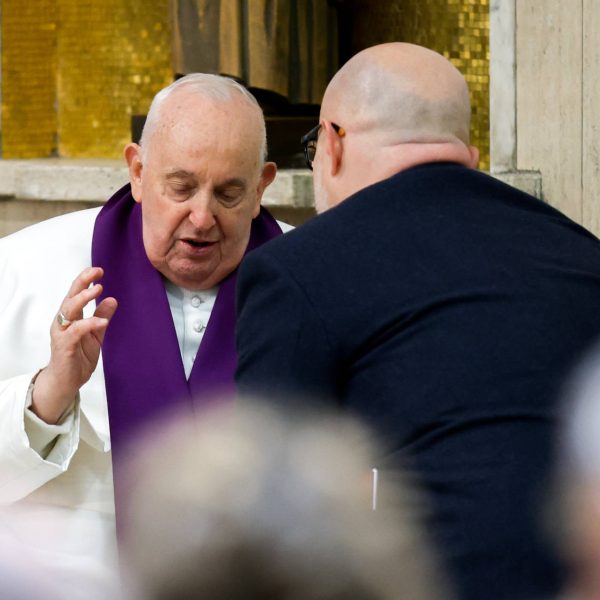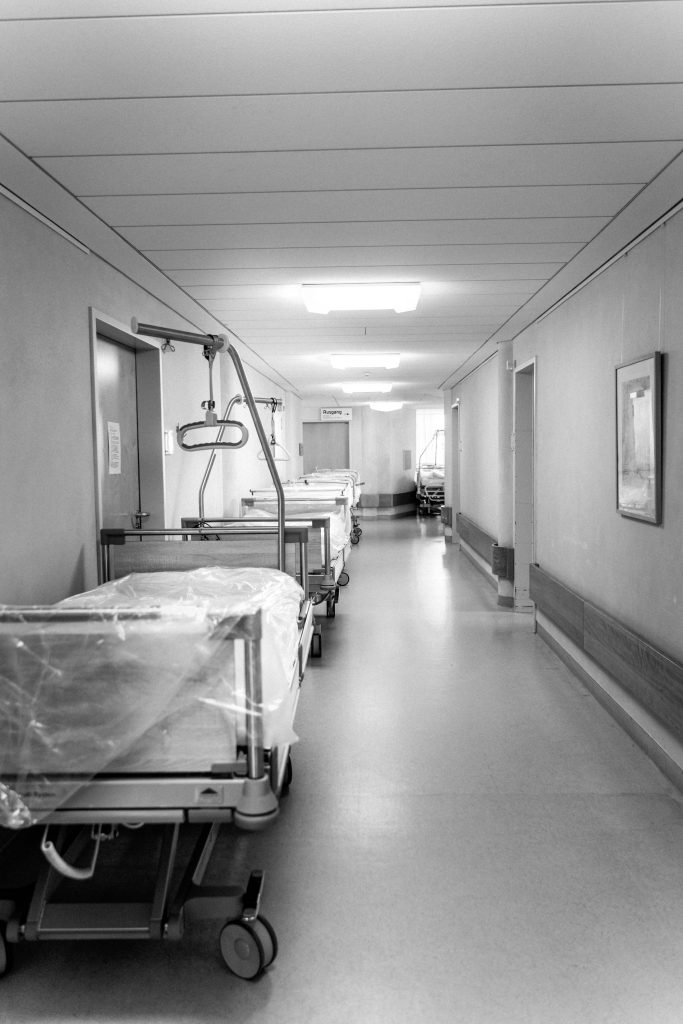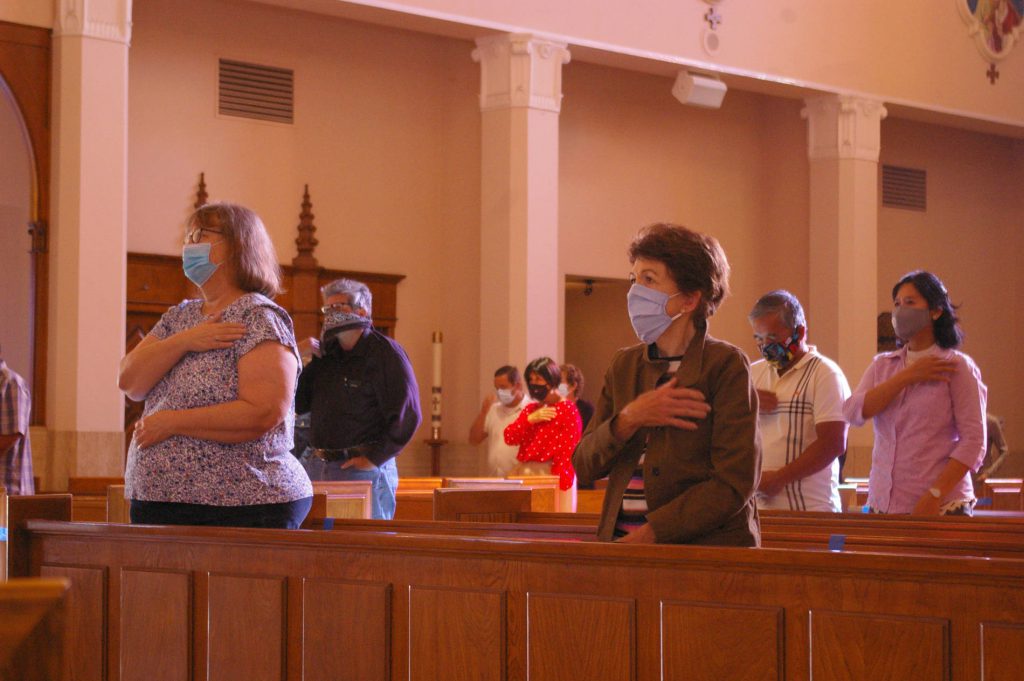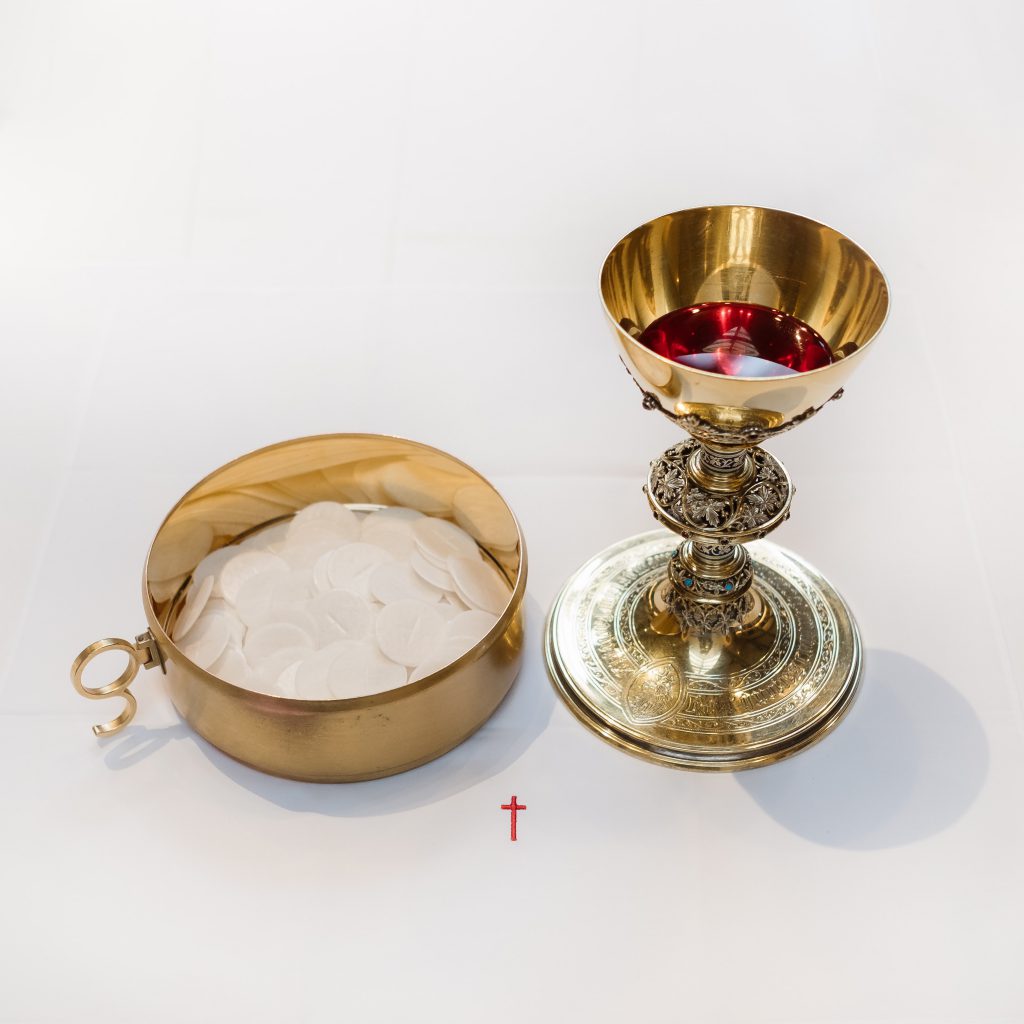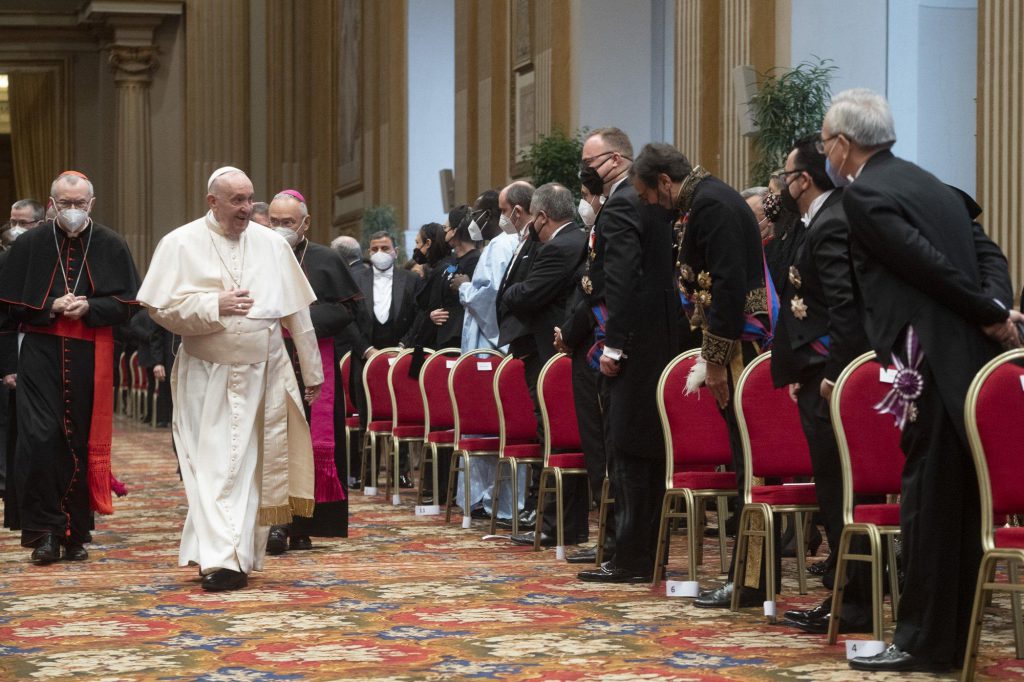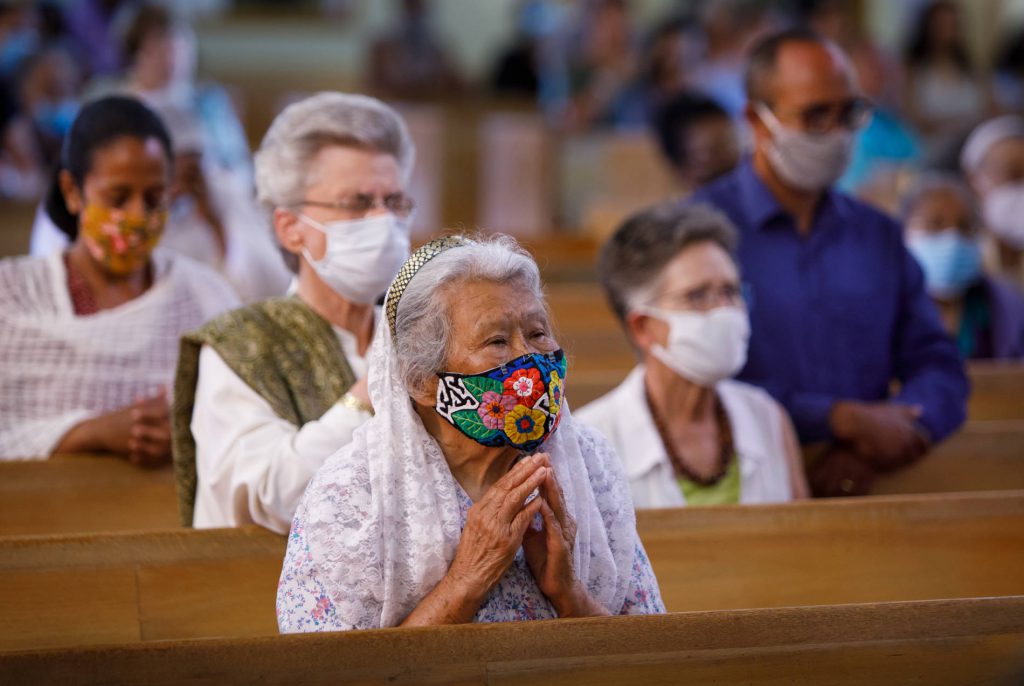SAN DIEGO – Father Adnan Ghani saw an average of two to three deaths every day, and occasionally as many as four, between October and December of last year.
For the Augustinian priest, serving as a hospital chaplain amidst a global pandemic has been the most difficult period of his young priesthood.
Ordained in December 2019, he has served since last May as a chaplain at Kaiser Permanente Zion Medical Center and Alvarado Hospital Medical Center. He recalled one afternoon in mid-December when he had come to the hospital to minister to a single COVID patient and discovered that eight others also needed him.
Two of them died before he left the hospital and another died the following day.
“I never ever got tired before this pandemic happened,” said Father Ghani, who was born in Pakistan and, at age 36, is among the younger priests in the diocese.
Yet the ministry has worn him down so much that he has returned to his monastery at times wanting nothing but “to lie down, and rest, and that’s it.”
Some 15 Catholic chaplains serve in hospitals in San Diego and Imperial counties, including those serving veterans and the military. Over the past year, they have found themselves on the front lines of a pandemic that has resulted in nearly 14,000 hospitalizations and 3,500 deaths in San Diego County alone as of March 24.
Their round-the-clock work, which has pushed them to their physical and emotional limits, has remained unknown, save for the patients they struggled to comfort in their final hours.
Chaplains have seen their ministry change dramatically in the past year, and Father Ghani is far from the only one on whom it has taken a toll.
‘People die by themselves’
For Father Joe Masar, a desire to “spend more time with the dying” led him to step away from being a pastor and shift toward hospice and hospital chaplaincy years ago. Currently a chaplain at Scripps Green and Scripps Memorial hospitals in La Jolla, he has had his hands full in the last year.
“Before COVID hit, I rarely got a call in the middle of the night,” said Father Joe, as he is known, who recalled an occasion in early February when he was feeling sleep-deprived after receiving multiple calls each night for four consecutive nights.
Before the pandemic, he had been able to reduce the number of such late-night calls by spending several hours at the hospital each day, checking in at the room of each Catholic patient. He provided counseling and prayer at the bedside of even non-terminal patients.
These days, he’s limited to visiting only those who are near death.
Before the pandemic, too, family members often gathered around the beds of dying patients and sometimes he was able to facilitate the healing of family divisions, he said. COVID brought an end to such encounters.
COVID patients are in strict isolation. Chaplains are not allowed to enter their rooms. He’s forced to pray with and for them from the outside.
“I’ve seen many people die by themselves, which is really a tragic thing,” he said.
“I have eye-locked with patients behind those glass doors, where I just know they want me to come in there and I can’t.”
Father Joe is unable to make the sign of the cross on patients’ foreheads and palms with the holy oils as part of the anointing of the sick, though he is able to recite prayers for them.
Sacraments are supposed to be “a hands-on thing,” as he said, and such barriers to pastoral ministry are frustrating, but he focuses on the positive.
“We are doing the best we can with the circumstances that we’re in and still doing everything that we can to bring the presence of the risen Christ to people,” he said.
‘I always have three masks’
Father Romeo Smith, who serves as a chaplain at Palomar Medical Center in Escondido and Tri-City Medical Center in Oceanside, returned to hospital ministry in November of last year. A native of the Philippines, he had previously served as a hospital chaplain from 2015 to 2018, before accepting an assignment as a parish pastor in the interim.
Father Smith, who goes by “Father John,” the religious name he received during his 20 years as a Benedictine monk, also has seen his hospital rounds curtailed. He’s been left waiting to receive calls about dying patients.
He spoke about the precautions that he takes when visiting the hospitals.
“I always have three masks,” he said, explaining that he wears a surgical mask covered by both an N95 mask and a cloth facial covering.
In his car, he also keeps a jacket and a pair of shoes specifically for use in the hospital, removing them and spraying his shoes with disinfectant before returning to his car.
In addition to ministering to patients through glass doors of hospital rooms, Father John has utilized technology. At the recommendation of nurses, he has met with hospitalized COVID patients from his own rectory thanks to the FaceTime app.
Father Lawrence Agi said that the COVID-19 pandemic has “absolutely” been the most trying time in his 23 years as a priest and 15 years as a hospital chaplain. Father Agi, who is from Nigeria, serves as the manager of Spiritual Care Services at Scripps Mercy Hospital’s Hillcrest and Chula Vista locations.
“I’ve never seen such human suffering in my entire life,” said Father Agi, who explained that neither his seminary formation nor hospital drills for situations with mass casualties had prepared him for the unprecedented nature of the pandemic.
He jumped at the opportunity to do “tele-chaplaincy” to minister to patients using the phone or a computer. When patients were unable to receive visits from family members, he said, chaplains also connected them through video chats.
‘It just does not happen’
Father Ghani shared that ministering to patients from outside of their rooms feels “kind of virtual, though I am present at the hospital.”
Were it not for the pandemic, he would be visiting even those patients who were not in danger of death. He would sit at patients’ bedsides, unmasked and without social distancing, and perhaps even hold their hands.
He recalled a recent occasion when he was called to the Kaiser hospital for a severely ill 26-year-old COVID patient. He wanted to enter the patient’s room, with the family at the bedside, to administer the sacrament of the anointing of the sick in the traditional manner. Were he to do so, the hospital staff told him, he would be considered exposed to the virus and would have to leave the hospital immediately, not even being able to pray with the patient’s other family members in the waiting room before his departure.
“Even when you would wish to go in and would like to do those things, it just doesn’t happen, because the staff says it’s better for the safety of all,” said the priest, who prayed for the patient through the glass divider.
The 26-year-old patient died within an hour of Father Ghani’s departure.
‘Empty beds in ICU’
Father Agi recalls the period after Thanksgiving through the holiday season as the worst of the pandemic because of an escalating number of hospitalizations and deaths. The hospital opened up additional floors for COVID patients. Family members flooded his office with phone calls.
Before COVID, there might have been one or two deaths in a month, he said. During the worst of the pandemic, he said, there were perhaps 10 deaths a week and times when as many as four or five people would die in a day.
Father Agi said that, since last May, chaplains have compiled a list of the patients who have died of COVID and have been offering Masses for them in the chapel at Scripps Mercy Hospital in Hillcrest. The list only includes patients from the Hillcrest location. When he looked at the list on March 18, he said, it included 95 names.
Fortunately, Father Agi said, hospitalizations and deaths linked to COVID-19 have “significantly dropped” since the holiday season.
Recounting a recent visit to Scripps Mercy Chula Vista in February, he said, “It was breathtaking to see empty beds in ICU.”
In a March 3 interview, Father Joe cautioned that we’re “not anywhere near through this [pandemic] yet.” But he expressed relief that things had “calmed way down” in the preceding three weeks, and said he had not received a single call from the hospitals about a COVID patient in need of a priest.
‘We can support each other’
The chaplains interviewed said the experience of ministering during a pandemic has changed them.
Father Ghani said it taught him that there is no certainty about the future and, rather than worrying about it, he should focus on the present.
Father Agi’s perspective also changed.
“Life is very fragile,” he said. “We can have it today; now it’s gone. And so, it kind of deepened my understanding of humanity and how we can support each other.”
Father Joe reports that his faith has been strengthened by the experience and, despite the volume of death and dying he has witnessed, there have been happy endings, too.
“People who I didn’t think would be alive by the time I got back down to my car, through the grace of God, have miraculously pulled through” after days or weeks on a ventilator, said the priest, who has spoken with patients who have beaten COVID.
“They have this second chance,” he said, and realize “that they had been in the midst of death – all around them, people dying – and, for whatever reason, they’ve survived.”

